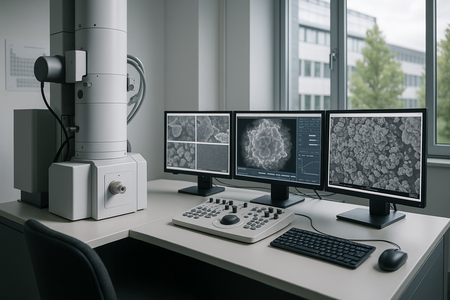
In a laboratory, the same instrument is used to measure different samples. In particular, Electron Microscopy (EM) is routinely used at many facilities as a primary or complementary method for materials characterization before or alongside other techniques. In addition to the common FAIR-compliant approach, which emphasizes standardized sample descriptions as a key aspect of data provenance, we propose to extend the focus on the information flow at the facility itself. By describing samples and their treatments following the same structure and adopting shared semantics, the benefits extend beyond the reproducibility of data, and include also the reuse of methods: this approach enables the scientists at the facility to leverage collective experience, contribute custom scripts, and enhance the efficiency of existing workflows.
This Infrastrucure Use Case (IUC20) will focus on providing a description of physical samples prepared for Electron Microscopy measurements, aligning with existing results (e.g., the PRIMA Thesaurus, the EM Glossary, the Sample Description Vocabulary) to ensure harmonization.
Main requirements:
|
| Main Task Area: TA-SAI, TA-MDI Other related Task Areas: TA-WLE |
| Possible connections within NFDI: NFDI4Ing, FAIRmat, NFDI4Chem |
| Material/Data: Metallic alloys / Physical laboratory samples for Electron Microscopy measurements |
| Main Success Scenario: Users can describe their physical samples using a common structure and semantics. This information can thus be reused at the facility to gain knowledge about materials and to improve the efficiency of the experimental and data analysis workflows. |
| Added value for the MatWerk community: The structured and semantic description of physical laboratory samples enables consistent documentation, improving reproducibility and supporting workflow and provenance tracking across facilities. This approach serves as a blueprint for describing other types of samples and measurements within the MSE community, establishing a best practice use case for FAIR sample documentation in EM. |
NFDI-MatWerk
Funded by the Deutsche Forschungsgemeinschaft (DFG, German Research Foundation) under the National Research Data Infrastructure – NFDI 38/1 – project number 460247524.
NFDI-MatWerk
Funded by the Deutsche Forschungsgemeinschaft (DFG, German Research Foundation) under the National Research Data Infrastructure – NFDI 38/1 – project number 460247524.
Subscribe to our newsletter for regular updates about materials science topics!
After subscribing, you will receive an email from us with a confirmation
link.
Only after clicking this link your registration is completed.